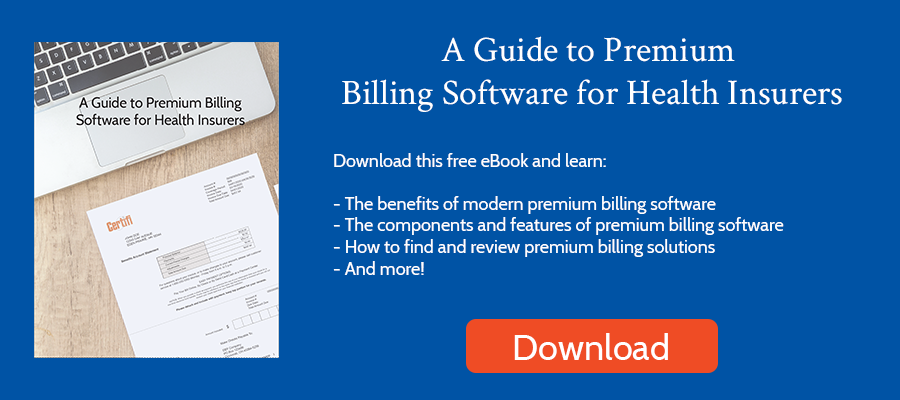Earlier this month, The US Departments of Health and Human Services (HHS), Labor, and the Treasury (the Departments) released new final rules implementing the Mental Health Parity and Addiction Equity Act (MHPAEA). At a high level, the new rules aim to prevent health plans from creating more restrictive coverage limitations on mental health and substance use disorder benefits than medical/surgical benefits.
Here’s a look at what the MHPAEA final rules do and what health plans need to know about the new regulation.
What is the Mental Health Parity and Addiction Equity Act (MHPAEA)?
The MHPAEA is a federal law that aims to ensure that health insurance coverage for mental health and substance use disorder benefits is equitable to medical and surgical benefits coverage. The Departments have released more than 15 sets of FAQs, eight enforcement fact sheets, six compliance assistance tools, and seven consumer publications since the Act’s enactment in 2008. Among the items addressed:
- Six benefit classifications (inpatient, in-network; inpatient, out-of-network; outpatient, in-network; outpatient, out-of-network; emergency care; and prescription drugs) were defined that, if a health plan provides benefits in those categories for a mental health condition or substance use disorder, benefits must be provided in every classification in which it provides medical/surgical benefits.
- Parity between mental health and substance use disorder and medical/surgical also applies to financial requirements like deductibles, copays, and coinsurance.
- Parity must also exist for numerical treatment limitations like day or visit limits.
- Non-quantitative Treatment Limitations (NQTL), which are non-numerical restrictions, like prior authorization, that health insurance plans may impose on the scope or duration of benefits for certain types of treatments, must be comparable to and applied no more strictly for mental health and substance use disorder than medical/surgical.
The Consolidated Appropriations Act (CAA) in 2021 amended the MHPAEA and required more oversight by the Departments to ensure health plans complied. These final rules address those amendments.
What Plans Must Comply with the MHPAEA?
The MHPAEA originally applied to group health plans and coverage. The Affordable Care Act (ACA) later amended it to apply to individual health insurance coverage. It does not apply directly to small-group health plans, though it may indirectly apply based on ACA requirements. Additionally, Medicaid managed care organizations (MCOs) and Children’s Health Insurance Program (CHIP) plans may be subject to some provisions of the MHPAEA.
What Does the New Final Rule Do?
In the final rule, the Departments summarized six items the final rule implemented:
- Clarified that individuals would not face restrictions on access to mental health and substance use disorder benefits when compared to medical/surgical benefits
- Ensure that plans can’t use NQTLs that are more restrictive than the predominant NQTLs applied to substantially all medical/surgical benefits in the same classification.
- Plans must collect and evaluate data, then take action to address differences in access to mental health and substance use disorder benefits compared to medical/surgical benefits if the data suggests material access differences.
- Health plans are required to conduct comparative analyses to measure the impact of NQTLs. As a result, plans must evaluate network composition, out-of-network reimbursement rates and medical management, and prior authorization NQTLs.
- Prohibit plans from using discriminatory information, evidence, sources, or standards that disfavor access to mental health and substance use disorder benefits when designing NQTLs.
- Implement the sunset provision for self-funded, non-Federal governmental plan elections to opt out of compliance with MHPAEA.
What Do Plans Need to Know About the New Final Rule’s Comparative Analyses?
Plans must perform a comparative analysis that contains at least the following six elements:
- A description of the NQTL that includes the NQTL benefits
- The factors and evidence used to design and apply the NQTL
- A description of how the plan uses those factors in the design and application of the NQTL
- The comparability and stringency of the NQTL, as written
- The comparability and stringency in operation that includes the required data, any material access differences, and what actions the plan took to address those differences
- Finding and conclusions
What Happens If a Plan is Determined to Be Out of Compliance with NQTL requirements?
The regulatory body may direct the plan to not impose the NQTL for mental health or substance use disorders until the plan can show compliance or fix the violation.
When Does the New Rule Take Effect?
Plans offering group insurance must comply with some requirements by the first day of the first plan year beginning on or after Jan. 1, 2025. Other requirements for group health plans take effect on the first day of the first plan year beginning on or after Jan. 1, 2026. Plans offering individual coverage will have until the first day of the first plan year beginning on or after Jan. 1, 2026.
What’s the Impact of MHPAEA Final Rules for Health Plans?
The Final Rule may impact health plans in several ways, including:
Network Expansion
If your analysis finds an access disparity between mental health and substance use disorder when compared to medical/surgical, you may need to take steps to correct the disparity. Mitigation efforts may include contracting with more mental health and telehealth providers and additional member outreach so they can find providers.
Additional Mental Health Coverage
By the so-called meaningful benefits standard, plans that provide any mental health or substance use disorder in one of the six classifications previously highlighted must provide benefits for mental health or substance use disorder in every classification in which the plan provides medical/surgical benefits. As a result, plans may need to cover additional mental health and substance use disorder services in some classifications.
NQTL Analysis Process
Plans have tight request response deadlines for their NQTL analysis. As a result, plans should consider reviewing/revising their NQTL analysis process to ensure quick revisions if there’s a benefit design change.
What’s Next?
Lawsuits may be likely. However, though a court could strike down certain aspects of the final rule, the requirement to perform an NQTL analysis is in a statute added by the CAA. As a result, NQTL analysis will still be required and must be available.
Where Can I Learn More:
Fact Sheet: Final Rules under the Mental Health Parity and Addiction Equity Act (MHPAEA)
The Mental Health Parity and Addiction Equity Act (MHPAEA)
New Mental Health and Substance Use Disorder Parity Rules
Final Mental Health Parity Rules – Top Five Changes to the Status Quo
Mental Health Parity: Departments Up the Ante in New MHPAEA Final Rules
Certifi’s health insurance billing and payment solutions help payers improve member satisfaction while reducing administrative costs.



